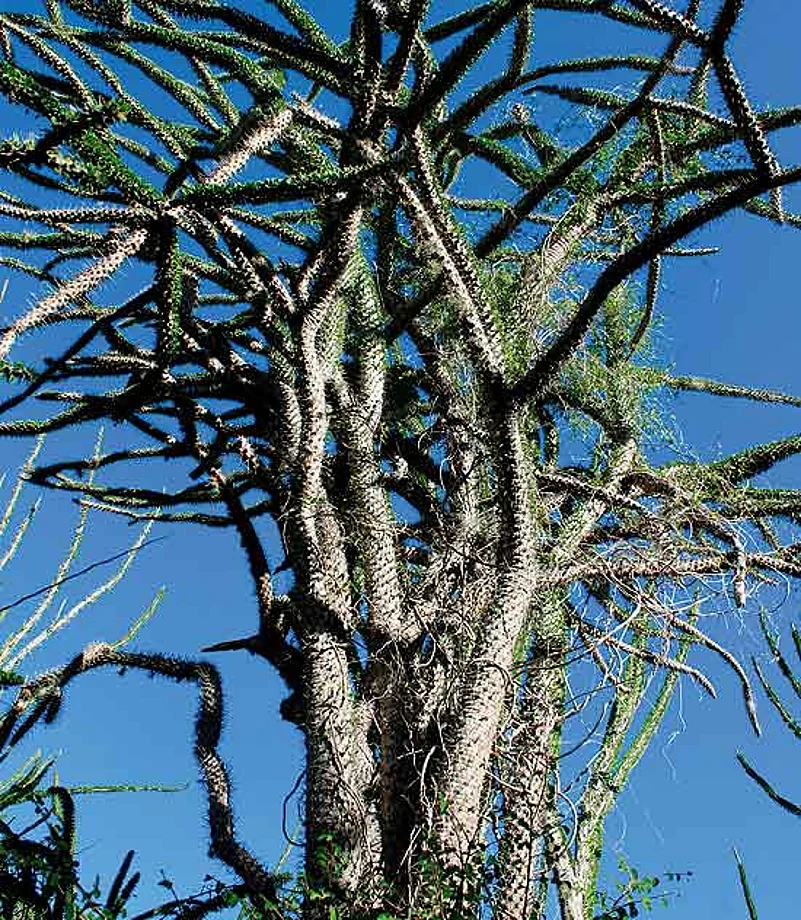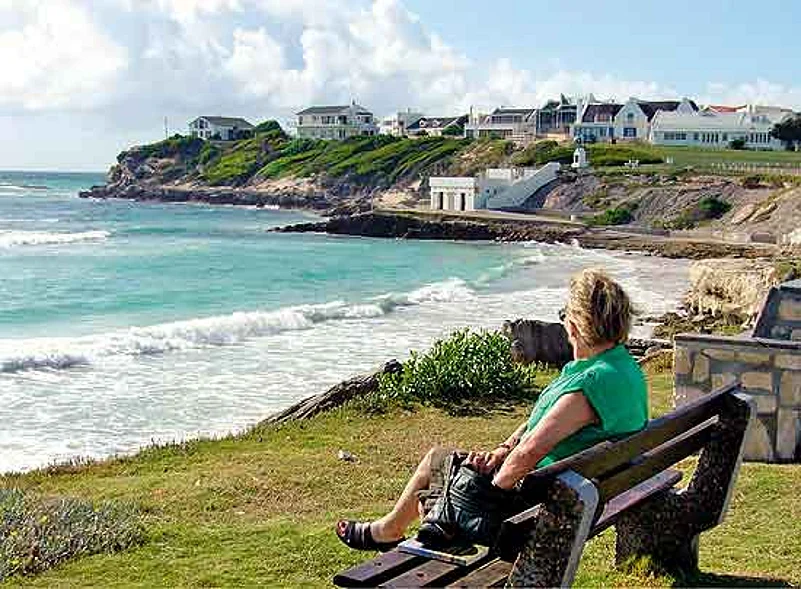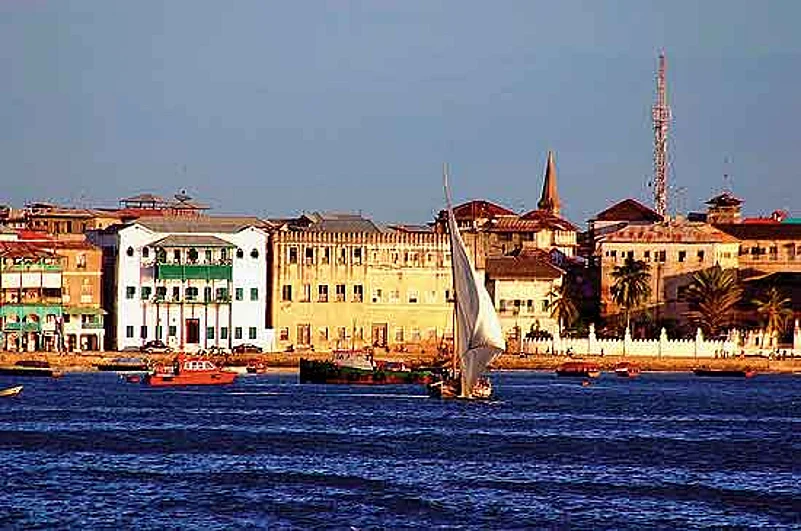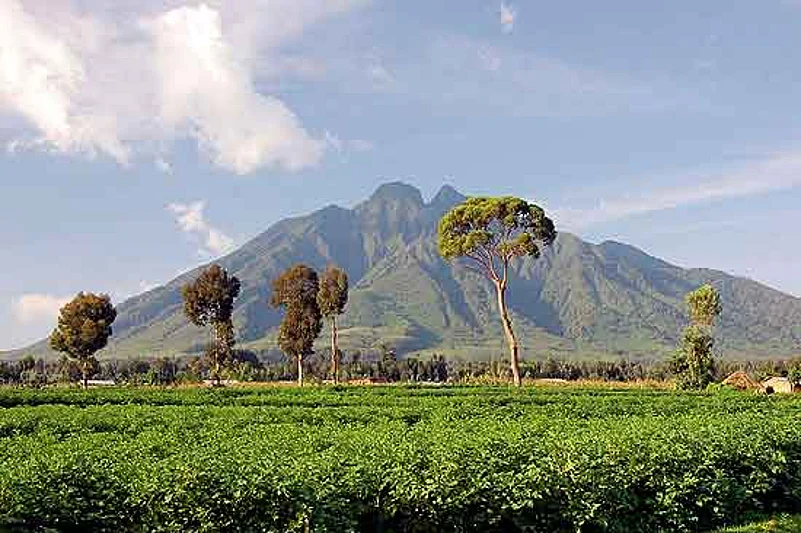- Getting there: The most direct way of getting to Madagascar is to fly Air Mauritius from Delhi/Mumbai/Chennai to Mauritius and catch a connecting flight to Tana on either Air Mauritius or Air Madagascar. Or, fly Kenyan Airlines via Nairobi; then, on to Madagascar.
***
Vanilla climbers, giant baobabs, lemurs, yes, like the prankish King Julien from the movie franchise that vaulted Madagascar into the public imagination—the very mention of the island conjures up one exotic spectacle after another. Given this, it can be a bit of a surprise when you find out how close the fourth largest island in the world is to our very own shores. Depending on your point of departure, take a six- or seven-hour flight to Mauritius’s capital Port Louis, a brief layover, and a hour-and-half flight later, you arrive in Antananarivo, Madagascar’s capital. Depending on flight schedules, one could leave India at daybreak and find oneself in ‘Tana’, the French colonial shorthand favoured by the locals, for a late lunch, thanks to the two-and-a-half-hour time difference.
With their comical faces and stuffed toy looks, the lemurs are Madagascar’s biggest tourist draw. And justly so—for there is no other place in the world where you can see them in the wild (and if their depleting numbers are anything to go by, there may soon be no place in the world to see them in the wild at all, so plan your trip sooner, not later). But Madagascar has other fabulous experiences on offer too—whale-watching off the eastern coast in the June to September period, when the seas off the island play host to migrating pods from Antarctica, the virgin forests, all surreal and spiny, that boast a whole host of bird species, nearly half of which are endemic to Madagascar.
By default, all visitors arrive in Tana, the only port of call for international flights. Tana is a bustling town, with busy markets, colonial buildings and a certain laidback charm. The entire town rises in tiers along Tana’s many hills, atop which is perched the Queen’s Palace, from where Madagascar’s kings and queens ruled for nearly three centuries. Unfortunately, all that survives of the palace today is the facade, with its interiors wiped out in a fire more than a decade ago. A slow restoration project is on, however.

‘Physically fit’ The main tourist draw, the ring-tailed lemur has continued to grow in popularity
Take a day to explore Tana and you won’t be disappointed. In addition to taking in the sights at the Queen’s Palace, you can spend time shopping and eating at the city’s produce and handicraft markets. Haggling is commonplace, so Indians will feel right at home. The upper town has many colonial buildings, echoing the island’s recent history as a French protectorate. Madagascar became independent in 1960, and although a coup d’etat in 2009 triggered red flags in international travel advisories, little tension is visible in Tana’s slow-paced daily life.
At the end of the day, though, Madagascar is truly the land of the lemurs and more than a 100 different species are found in different parts of the country. One of most widely recognised are the ring-tailed lemurs with their ringed (what else!) upright tails. One of the best places to see them is the privately owned Berenty reserve, which is in the far south of the country. A one- or two-hour-long flight (depending on how many hops Air Madagascar, the national carrier, adds to the day’s route) takes you to Fort Dauphin, and a three-hour drive along a non-existent road brings you to the red earth and friendly lemurs of Berenty. The almost complete absence of a natural predator—the lone predator, the cat-like fossa, heads the food chain—in Madagascar and around Berenty in particular makes room for some unique experiences. For one, the lemurs are completely fearless, so be prepared to eat your meals in the reserve’s main dining area in the company of a family of ring-tailed lemurs. Two, night walks are permitted without restriction in several of Madagascar’s forested areas. For wildlife travellers used to warnings about park gates being shut at sunset, this is a once-in-a-lifetime experience.
The spiny forest, with its thorny plant life, is found in the island’s south and southwestern regions. With vegetation that has adapted to the dry habitat, the spiny forest is also host to several endemic species of flora and fauna. The dry landscape in the south and west is also the setting for Madagascar’s spectacular baobab trees. With their unique shape—they are called ‘upside down trees’ as their branches look like roots sticking up into the air, these colossal trees are an iconic symbol of Madagascar. Some of them are said to be thousands of years sold. One of the island’s most stunning sights is the Avenue of the Baobabs, a natural walkway of these giant trees found near Morondava, western Madagascar.
A convenient four- or five-hour drive from Tana on the country’s best road, Perinet National Park is home to the indri, Madagascar’s largest lemur. Nearly three- to four-feet-tall, with looks that are distinctly koala-like, the indri has a distinctive, plaintive call heard for miles. One of the most immersive wildlife experiences in Madagascar is standing under the great canopies of Perinet, listening to the ancient call of the indris on the branches above.
The route that takes you to Perinet goes past a reptile farm where close encounters with chameleons, geckos and the island’s reptiles is possible. A knowledgeable guide at Perinet will also be able to spot some of these in the reserve’s wild. Almost half the world’s chameleon species can be found in Madagascar, from the Parsons’s chameleon, the world’s largest, to the Brookesia micra, the smallest, which is about the size of an adult fingernail.

Madagascar’s French colonial past is all around you when you travel through this island nation. French and Malagasy are the commonly spoken languages and a working knowledge of French makes passage through the island easier. There are also accented traces in the cuisine: one of the most surreal experiences is being served French-style plated three course meals in the remote corner of Berenty. Baked goods—delicious baguettes, croissants, brioches and the distinctive shell-shaped madelines—are of high quality and reasonably priced.
Or try traditional Malagasy cuisine, which includes dishes like grilled lizard and zebu (the local cattle) meat accompanied by the local staple, rice. Produce markets also abound with the fruits of the season and are a must-visit. With the island being synonymous with vanilla—pods, derivatives like vanilla extract, powder, vanilla-based cosmetics and even vanilla-infused rum are a good buy. A more unusual purchase here would be chocolates from Chocolaterie Robert, a household name in Madagascar whose products can be found even in the most rural areas. The brand which also has a conveniently located outlet in Tana’s international airport is just the sweetest of the many hidden surprises tucked away within this Indian Ocean island.
***
Plus 4

Sosusvlei: Forget Windhoek. Swakopmund? Too crowded in the southern summer. Visit Sosusvlei instead in Namibia’s Naukluft national park: you have probably seen it in a hundred brilliant photographs, but seeing it in real life is stunning. These are sand dunes the way God intended them to be—piled high with talcum-soft sand, frequently in perfectly-shaped piles. See them from the air in a hot-air balloon ride, or try walking up the sloping sands.

Arniston: Don’t believe the lilting Cape-accented tour guides who “show” you the merging of two Oceans at Cape point. Because they don’t merge there: the actual land’s end of Africa is at Cape Agulhas, 200 miles east of Cape Town. Stay at Arniston, a charming fishing village, with stunning views of the Indian ocean, a short drive from Cape Agulha. Try the seafood in Mozambican shacks at the village. Visit vineyards, try the Sauv Blanc. Adventurous? Check out our finny friends. Shark-cage diving at Gansbaai en route from Cape Town.

Stone Town, Zanzibar: A world heritage site that celebrates over a thousand years of mixed Arab-Indian-East African trading heritage. Stunning Zanzibar brings together Omani, Portuguese, Swahili and even Gujarati traditions in architecture and decor. It is now beautifully preserved. And, of course, has beaches!

Virunga Mountains: Currently best accessed through Rwanda’s Volcanoes national park (since most of Virunga is in the strife-torn Democratic Republic of Congo), the mountain gorillas are a sight worth the price and the effort to reach this lush, green country in the heart of the Great Lakes region.
— from the travel diaries of an old Africa hand





















